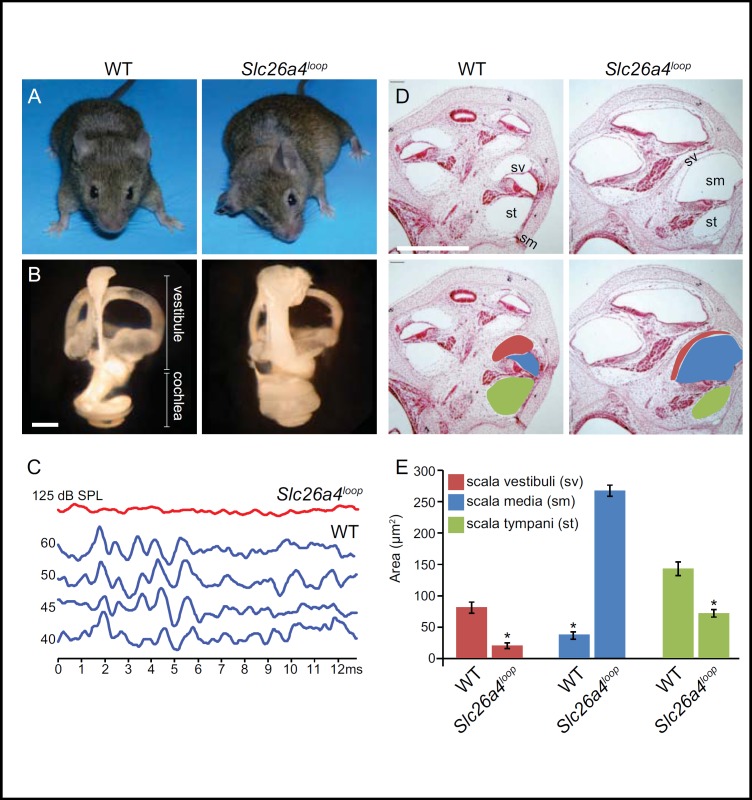Fig. 2.
Auditory phenotypic characterization of Slc26a4loop is common to all known Slc26a4 mouse models. A: A representative image of Slc26a4loop mice shows the typical unsteady gait of the mutant mice that was determined by a panel of vestibular behavioral tests. B: Paint-filled inner ears of Slc26a4loop P0 mice show a bulged fluid filled compartment, with a prominent volume increase in the cochlea and the vestibular system. C: Auditory brainstem response (ABR) test on 8-week old mice reveals that Slc26a4loop mutants are profoundly deaf at three frequencies that were tested, 8Khz, 16Khz and 32Khz. An ABR recording for 8Khz is shown (red). D: Cross sections through the cochlea of Slc26a4loop mice reveals hydrops of the endolymphatic spaces of the scala media (sm), whereas the perilymphatic spaces of the scala vestibuli (sv) and scala tympani (st) are smaller. E: Histogram graphic representation shows the quantified area of the different cochlear compartments as compared between normal and mutant mice. A prominent enlargement of the endolymph field scala media is apparent in Slc26a4loop mice, at the expense of the smaller scala vestibuli and scala tympani. Scale bars equal 500 μm in panel B and D. Adapted from [42] with permission.

